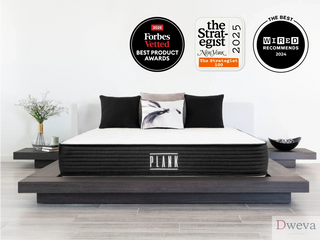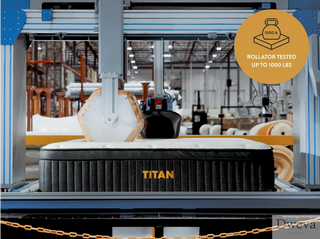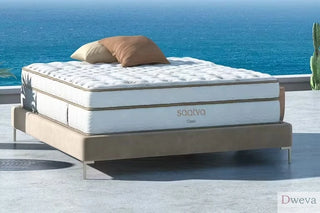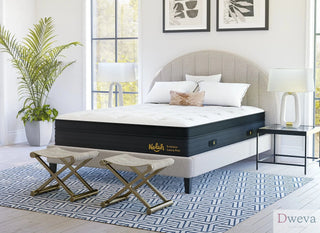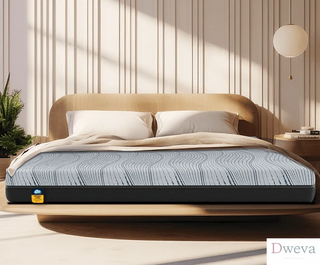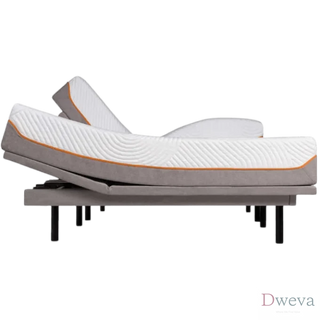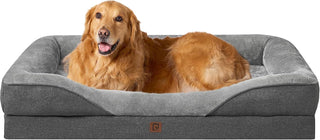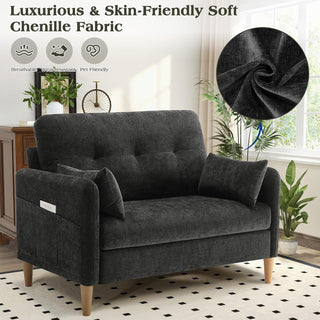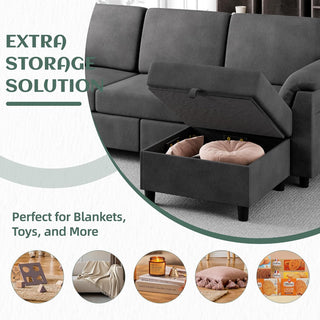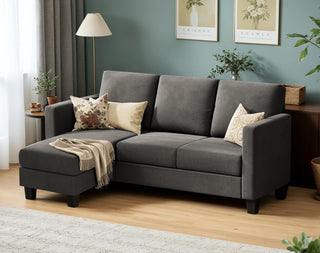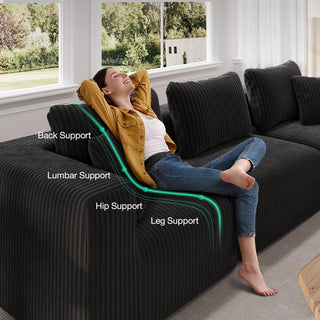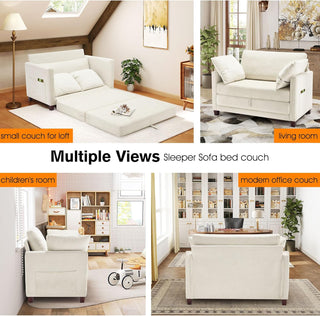Shopping for a mattress can be a daunting task. With so many choices available, it’s easy to feel overwhelmed. Add in all the different mattress types and terms, and it’s no wonder mattress shopping can be stressful. If you're on the hunt for a new mattress, you've likely encountered the terms "memory foam" and "hybrid" mattresses. These two types are among the most popular options on the market, and there are some excellent choices in both categories.
Choosing between these two mattress types is a great starting point, and understanding their key differences can help you make the right decision. So, let’s break it down and find out which mattress is best for you with the help of Casper.
- 1. What Is a Memory Foam Mattress?
- 2. What Is a Hybrid Mattress?
- 3. Hybrid vs Memory Foam Mattresses: Key Differences
- 4. The Benefits of Memory Foam
- 5. The Drawbacks of Memory Foam
- 6. The Benefits of Hybrid Mattresses
- 7. The Drawbacks of Hybrid Mattresses
- 8. Who Should Choose a Memory Foam Mattress?
- 9. Who Should Choose a Hybrid Mattress?
- 10. Overall
What Is a Memory Foam Mattress?
Memory foam mattresses are made from polyurethane foam, a material originally created for NASA. This material became widely popular and is now used in various furniture and mattress designs.
Memory foam is known for its softness and slow response to pressure. When you lie on a memory foam mattress, the foam slowly compresses under your body weight, providing a custom fit. Unlike other mattresses, memory foam doesn’t feature springs—it’s purely foam. For example, the Casper mattress uses comfort foam, memory foam, a transition layer with Zoned Support, and durable support foam, all without any springs.
What Is a Hybrid Mattress?
A hybrid mattress combines two different mattress technologies: innersprings and a comfort layer made of foam, latex, or memory foam. Essentially, it combines the support of springs with the plush feel of foam, providing the best of both worlds. For example, the Casper Hybrid mattress uses a mix of comfort foam, memory foam, a transition layer with Zoned Support, and pocketed coils.
Hybrid vs Memory Foam Mattresses: Key Differences
The biggest distinction between memory foam and hybrid mattresses lies in their construction: hybrids contain coils, while memory foam mattresses don’t. This difference leads to several other variations in performance.
| Feature | Memory Foam Mattress | Hybrid Mattress |
| Support Layer | High-density memory foam | Innersprings (coils) |
| Comfort Layer | Memory foam | Foam or latex |
| Durability | 5-7 years | 7-10 years |
| Price | $500 - $1,200 | $650 - $2,000 |
| Temperature Regulation | Low | High |
| Motion Transfer | Low | Medium |
| Bounciness | Low | Medium |
Memory Foam Mattresses: More Affordable
A key difference is that hybrid mattresses tend to be more expensive than memory foam mattresses, largely due to the inclusion of coils. If you're on a budget, memory foam is usually the more affordable option.
Hybrid Mattresses: More Supportive
Although hybrid mattresses tend to cost more, they offer extra support due to the coils. This makes them a better option for heavier sleepers, back sleepers, and stomach sleepers, as they can provide more even support across your body.
Hybrid Mattresses: More Breathable
The inclusion of coils in hybrid mattresses makes them more breathable than memory foam. The coils allow air to circulate through the mattress, preventing the heat from getting trapped inside, which is often an issue with memory foam.
Hybrid Mattresses: More Durable
Hybrid mattresses tend to last longer than memory foam mattresses due to their coil structure. Memory foam can begin to sag over time, but the coils in hybrids offer greater durability, ensuring the mattress maintains its shape for longer.
The Benefits of Memory Foam
While memory foam may not have coils, it does come with a set of distinct advantages:
- Pressure Relief and Contouring: Memory foam is great at relieving pressure, particularly for side sleepers. It conforms to your body, reducing pressure on key areas like the shoulders and hips, helping keep your spine in neutral alignment.
- Quiet: Memory foam is virtually silent. Unlike hybrid mattresses with springs that might squeak, memory foam has no noise, making it a great choice for light sleepers.
- Motion Isolation: If you sleep with a partner, memory foam excels at isolating motion. When one partner moves, the other partner remains undisturbed.
The Drawbacks of Memory Foam
However, memory foam mattresses have some downsides:
- Heat Retention: One of the main issues with memory foam is that it traps heat. This can cause the mattress to feel uncomfortably warm throughout the night. However, some newer memory foam mattresses feature cooling technologies, such as gel infusions or breathable covers, to help address this.
- Sagging Over Time: Memory foam mattresses tend to sag more quickly, especially if they’re made with low-density foam. For longer-lasting durability, look for high-density memory foam (4-5 lb).
- Slow Response: Memory foam has a slow response time, meaning it takes a few seconds to adjust as you shift positions. Some sleepers may feel "stuck" in the mattress, especially when changing positions.
The Benefits of Hybrid Mattresses
Hybrid mattresses offer several advantages:
- Breathability: The inclusion of coils in hybrid mattresses promotes air circulation, making them cooler than memory foam mattresses.
- Support: The coils offer excellent support for heavier sleepers, as well as back and stomach sleepers, providing the support needed to maintain proper spinal alignment.
- Comfort and Support Balance: Hybrids combine the benefits of foam and coils, giving you the best of both worlds. They offer both comfort and support, making them ideal for combination sleepers who change positions frequently.
- Durability: With coils providing the foundation, hybrid mattresses tend to be more durable, maintaining their shape and support for a longer period.
The Drawbacks of Hybrid Mattresses
Despite their benefits, hybrid mattresses also come with a few drawbacks:
- Higher Price: Hybrid mattresses tend to cost more than memory foam mattresses due to the addition of coils. However, they can be a worthwhile investment for those who prioritize support and durability.
- Motion Transfer: While better than traditional innerspring mattresses, hybrid mattresses still don’t isolate motion as well as memory foam. If you sleep with a partner, you may feel their movements during the night.
- Weight: Hybrid mattresses are generally heavier than memory foam mattresses, which can make them more difficult to move, especially when it’s time to shift or relocate.
Who Should Choose a Memory Foam Mattress?
A memory foam mattress is a great choice for:
- Those who prefer to sink into their mattress: If you like the feeling of being “hugged” by your mattress, memory foam’s contouring effect is ideal.
- Side sleepers: Memory foam offers superior pressure relief for side sleepers, making it easier on your shoulders and hips.
- Budget-conscious shoppers: Memory foam mattresses tend to be more affordable compared to hybrids, making them a great option for those on a budget.
- Couples: Memory foam is excellent for motion isolation, making it ideal for couples who don’t want to be disturbed by each other’s movements during the night.
Who Should Choose a Hybrid Mattress?
A hybrid mattress is a great option for:
- Those who like to sleep on top of their mattress: If you prefer not to sink deeply into your mattress, hybrid mattresses offer a more “on top” experience.
- Hot sleepers: If you tend to overheat during the night, the breathable coils in hybrid mattresses can help keep you cool.
- Larger sleepers or those needing extra support: Hybrid mattresses offer a high level of support, making them perfect for heavier individuals or those who need more back support.
- Combination sleepers: The balance of comfort and support in hybrid mattresses is ideal for people who switch positions during the night.
Overall
Choosing between a memory foam or hybrid mattress depends on your individual preferences and sleep needs. Both have a lot to offer, but they cater to different types of sleepers. Consider factors like your preferred sleep position, temperature regulation, and support requirements to find the perfect mattress for you.



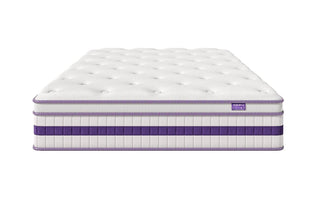
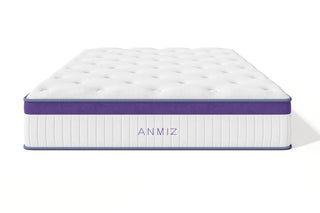
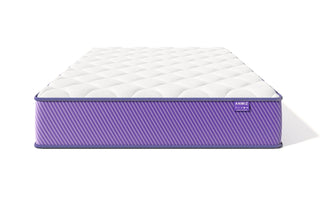

 https://dweva.com
https://dweva.com


